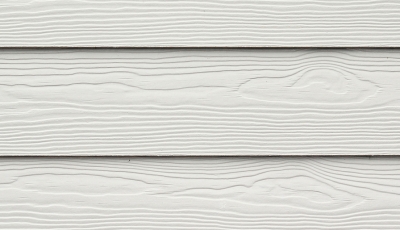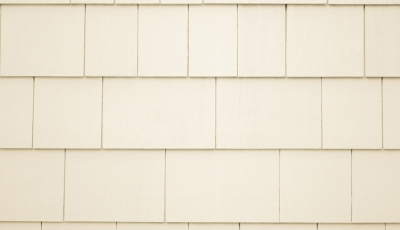Woodpeckers are a problem in the Atlanta area, and if you have wood siding, they can damage it year after year. The solution? Replace wood with a woodpecker-resistant siding you can trust.
Fiber cement is made of cement, sand, and cellulose. It resists both woodpeckers and pests like carpenter ants and termites, saving you the hassles of repairing your home exterior.
The most popular fiber cement siding product in America is James Hardie. Known for its durability and beauty, this woodpecker resistant material will look great decades after it’s installed. Known to last up to 50 years, Hardie siding protects over 8,000,000 homes in America.
The Problem with Woodpeckers
When choosing a replacement siding material, many homeowners look for beauty, style, and weather resistance. All of these qualities are important in your final decision, but one additional feature that may go undetected is the need for woodpecker-resistant siding.
If you lived in a home where the pounding of woodpeckers woke you up each morning, and softball sized holes seemed to show up overnight, you’d understand how important it is to keep woodpeckers away from your home. Once damage occurs, your siding is compromised and moisture can penetrate it as a result. The costly hassles add up when it comes to repairing woodpecker damage, and the toughest part about it is that woodpeckers return annually to the same area to do more damage.
If you have wood siding, the only way to stop woodpeckers from damaging your home is to replace the damaged boards.
What Attracts Woodpeckers to Home Siding?
- They’re looking for food, and insects live in some siding types.
- They need shelter for their nests, so they create large round holes in siding for the purpose of breeding.
- They need a place to store food, so they drill holes in some siding materials to store their acorns.
- They are attracted to some types of siding, particularly if they can drum on it and make a loud sound to attract a mate. Woodpeckers also peck at siding to claim their territory, and their zone can be passed down from generation to generation, creating a consistent annoyance from both noise and damage to a home exterior.
What Woodpecker Damage Looks Like
- Large holes—Woodpeckers are attracted to wood siding in order to drum, roost, and nest. They make themselves at home by creating large holes in your siding for their own purposes.
- Multiple small holes—Woodpeckers create rows of small holes in wood siding while looking for insects. Multiple small holes may be found due to a woodpecker drumming on a home’s fascia boards.
Why Fiber Cement Is the Best Choice for Woodpecker Resistance
Some siding materials are easy targets for woodpeckers, but fiber cement offers woodpecker resistance.
- Cedar Shake or Cedar Shingle—This wood siding is a favorite of woodpeckers, and it is easily damaged due to woodpecker drumming, nesting, and insect foraging.
- Tongue and Groove Cedar—Woodpeckers love the seams in this siding type, making it probable it will end up damaged.
- Fiber Cement—This durable siding resists woodpecker destruction, giving you reliable protection for your home. Avoid the hassles of repairing woodpecker-damaged siding, and skip the annoyance of the sound of woodpecker drumming day after day. The makeup of fiber cement siding is the opposite of what woodpeckers are looking for.
- Food—Hardie siding is too hard to peck a hole in, so woodpeckers can’t store their food in it. There aren’t any insects to find in it because Hardie siding is also insect resistant.
- Nesting—Due to its makeup, woodpeckers can’t create holes in Hardie siding for nesting purposes.
- Breeding—When you choose Hardie siding, you won’t hear woodpeckers drum on it trying to create loud noises to attract a mate. There won’t be any small or large holes drilled into your home because Hardie siding is so durable, it’s not possible for woodpeckers to penetrate it.
Avoid the Hassles of Woodpecker Damage
Siding needs to stand up to weather, pests, and woodpeckers 24/7. Choosing a durable material like Hardie siding will give you peace of mind that your home is well protected.
Benefits of Hardie Siding
Woodpecker Resistance
Get the peace and quiet you deserve at home without the annoyance of woodpeckers.
Pest Resistance
Avoid the hassles of pest infestation with durable Hardie siding.
Distinct Beauty
Bring out the best in your home exterior with this gorgeous product.
Personalized Customization
Choose the perfect siding style for your home:
- HardiePlank—Timeless horizontal lap siding, the most popular Hardie style
- HardieShingle—The beauty of cedar siding without the high maintenance
- HardiePanel—Vertical siding that gives your home a contemporary look
- HardieTrim—The perfect finish for your home exterior
- HardieSoffit—Protect your roof eaves and porch ceiling with durable beauty
Lasting Color
Get Hardie’s ColorPlus technology for factory-baked-on shades that last. Choose from designer-picked color combinations to complement your home’s architecture and express your style. Enjoy a fade-resistant, UV-resistant siding finish with a 15-year warranty against peeling, flaking, or chipping.
Noncombustible
Protect your family and home with flame and heat resistant Hardie siding, which won’t contribute to a fire.
Engineered for Climate
The Hardie company studied the long-term impact of climate on siding and developed the HardieZone system to stand up to your region’s specific weather.
Excellent Warranty
Hardie siding comes with a 30-year non-prorated, transferable warranty. As long as your siding is installed by a James Hardie Preferred contractor, your warranty is honored.
- Click here to check out our James Hardie siding guide to learn more about this incredible product.
Trusted Siding and Installation by Falcon Homes & Remodeling
Falcon Homes & Remodeling is a James Hardie Preferred contractor, so your siding will be installed with precision and according to the manufacturer’s standards.
Learn more about James Hardie siding’s benefits.



